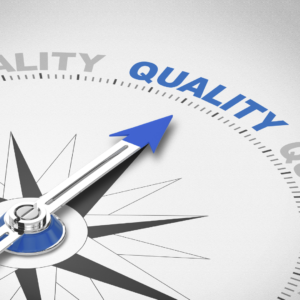I recently attended a keynote presentation in the ISO industry which focussed on the evolution of the ISO 9001 Quality Management Systems Standard.
The presenter, who was from the Chartered Quality Institute, was speaking on research conducted in collaboration with other institutions.
The research is a work in progress with new insights being added regularly, however, the contents of this blog will share some of the insights that were received from the presentation that I feel left the most impressions on me.
Working definition
Firstly, it is important to define what the working definition of ‘Quality 4.0’ is as the CQI states “Quality 4.0 is the leveraging of technology with people to improve the quality of an organisation, its products, its services and the outcomes it creates”, (CQI,2021).
There are eight key principles that the CQI breaks the research into. These are; the co-creation of value, cybernetics, transparency and collaboration, mutual trust, rapid adaptive learning, data value, technology and combined intelligence and lastly cyber-physical systems. It is also important to understand why the research was intended to be carried out in the first place.
Background
Industry 4.0 and the technological revolution that accelerated during the pandemic has led to some quality professionals being confused as to what quality 4.0 is and how it can be established. As quality assurance can be applied to most industries, the rapid evolution and digitization of the world means keeping up with changes is essential for the success of the profession.
What is also interesting is that the new definition of quality 4.0 greater enables service-based businesses to take advantage of new developments.
Principals
Among the eight principles, some that stood out were central to the environment in which operations combine with people and technology. One of the examples that were given was the evolution of health monitors and fitness gadgets. The big takeaway from this is Data Value as an Asset. This has an impact on improving people’s health and well-being but where quality management plays a role is the trust in the data, availability, accessibility and confidentiality. This is also linked to ISO 27001 Information Security.
Both ISO 9001 and ISO 27001 are to do with the risk management of big data and trust with transparency that jointly helps information, making sure that the information is of quality to better enable organisations to demonstrate compliance and effective management.
Another principle named technology and combined intelligence was a good insight. In summary, it mentions how the ever-widening types of innovations in technology including machine learning, artificial intelligence augmented human intelligence and their relationship to the Human will inevitably have an impact on the industry of quality.
What is interesting about this is while some say robots will take over jobs and careers in many fields some also believe in it being an enabler to improve efficiencies and productivity in the workplace. The Quality profession is no exception.
Throughout the ages, change has been the only constant, in my opinion, this is also now more than ever evident in the workplace not just for manual jobs but for white-collar jobs.
In the Quality profession, the changes mean more simple tasks will be conducted by machines and real-time data will be a tangible result. The human worker will play a key part in this.
Summary
It has been clear that the quality industry is changing for some time however ISO 9001 has stood the test of time and rather than viewing it as a complete shift it can be viewed as adapting methods and processes to keep up with relatable trends and changes.
Assent Risk Management’s range of quality ISO consultants can help you and your business explore quality 4.0 further and better manage your company’s Quality management System. For more information please visit https://www.assentriskmanagement.co.uk
The CQI alongside others continues their research efforts in this ever-evolving space. For more information on the research used for this article see the CQI website: https://www.quality.org/quality-4-point-0


